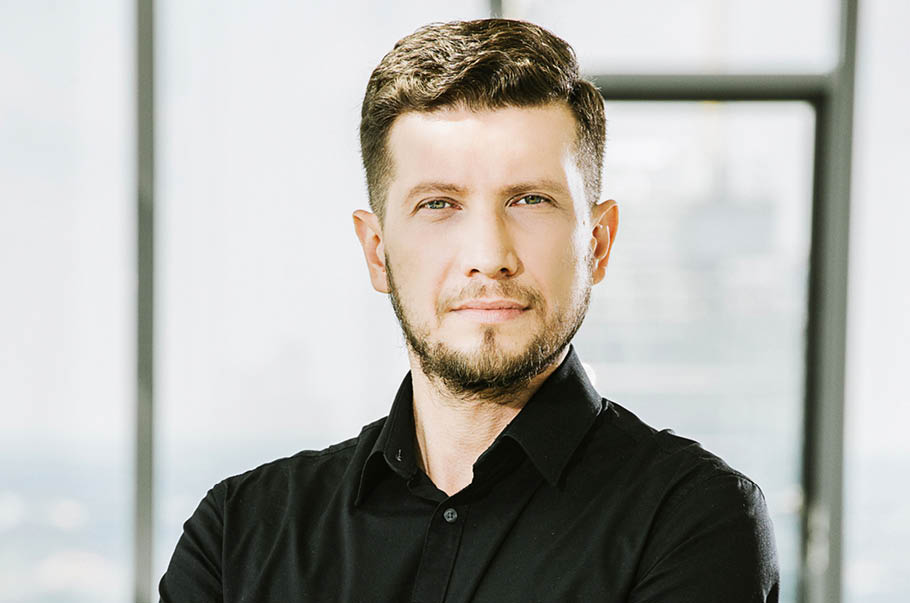Meanwhile, at an alarmingly fast pace, we’ve found ourselves in our time, where the ‘cell phone’ has lost its essential function of making calls and as a smartphone has gained a new face as the ‘centre of life’ - both private and business alike. We live in times of paradoxes, in which on the one hand, we look for individuality, self-definition of the individual, security (including data); and on the other hand, we continually share a whole mass of data with the world. We look into the lives of others, we comment, we give likes, we follow, we imitate - you can safely say that we basically live online. We increasingly do our shopping there, we seek out opinions, watch movies or listen to music. Thus, a picture of ‘interesting times’ begins to emerge, in which we have a chance to live with the immensity of opportunities brought about by this digital revolution. I consider this not to be the Internet and social media itself, but a change in ourselves in relation to access to knowledge and entertainment at practically anytime and essentially everywhere.
In the first part of the article, I quoted the fashionable word ‘influencer,’ also widely known as a Content Creator. These are people who are currently generating the greatest changes; they can, through their realm of influence, change the way we think about a given product, the climate, even our very way of life. Who exactly are they?
At present, I’ve been working for more than 5 years at the company TERRITORY Influence, which cooperates with influencers. My role is based, among other things, on tapping into their advantages and their influence on behalf of brands to build product and service awareness among their followers.
From experience I can say that this is a group that still eludes a strict and unambiguous definition. I am convinced that each of us (sometimes even unconsciously) is an influencer, just as each of us is a consumer. We exchange information in regular conversations, e-mails, during casual meetings, over dinner or over morning coffee in the office. Our recommendations very often find their way into these conversations. Each of us has his/her preferred areas of knowledge that we enjoy sharing with others. For some people it might be running, for others it could be diets or fashion. We pass on our knowledge or opinion, our perspective and our personal experiences with the aim of helping to improve the image of the person we are engaging in conversation with; at times our intention may be to position ourselves as an expert or authority on a given subject. There are those among us who are less or more effective in collecting, generating and passing on messages. Social media favour the latter as people with a higher than standard number of friends, followers, a greater number of likes under their posts or photos, as well as an above-average number of shares of their published content. Nowadays, each post of an influencer is in fact a study in itself concerning the content published, or the quality of the photo and its aesthetics. Both in the past and today, the winner was/is the one who better responds to the needs of his/her target group, who is more attractive to it, and whose message is deemed important by the recipient; in other words, who a person chooses to be, his/her originality, which can be understood as his/her own style. This translates into the level of attention he/she can attract from others. So we may ask, why is this happening? After all, we can now follow hundreds of profiles, thousands of channels, but some people attract more attention than others. This is a paradox of our era - the issue is of course: time. We simply cannot spare time for everyone, and so we will devote more of it to those of greater importance to us. Their message will reach us faster and we will remember it better. Here it is worthwhile to stop for a while and focus again on the influencers themselves and the weight of their message. Among our friends there are people with whom we have a certain emotional connection, people we may like for various reasons or who we value for what they do. It could be our family, our friends or our favourite athletes. All of these messages are of different importance; however, when any of the above mentioned tells us about a product - we intuitively know whether this particular product falls within the area (domain) of the person’s natural knowledge. A message created by a natural expert, e.g. our friend, who is also a parent, who talks about the experiences of her child through a personal post, which allows insight into a scene from the life of this woman and her child, will resonate with us as long as we know this mother and know that she wouldn’t give her child something untested to eat. We use her authority unconsciously. In yet another example, it could be our favourite football player who is wearing headphones before entering the stadium and who has found a spare moment to publish his photo along with greetings to his fans. We consider him to be an expert in sports, but his image is imprinted in our minds so much that we naturally perceive his choice as a premium option.
The world of influencers is currently divided into two areas: paid influencers, who have built their popularity through a ‘self-generated concept’ or by simply monetising their popularity gained in another field; the second area is the domain of natural influencers (Everyday-, Micro-, Nano-Influencers, i.e. the average consumer). The differences between these two types result from the reach of their messages.
Knowing these differences, we can try to answer the question of who to invite to cooperate, how to use his/her specific features and the area of operation that can be employed to help a specific brand or product? Unfortunately, there is no single key that allows you to universally match a specific type of an influencer to categories or product groups. It is important that the cooperating influencers reflect the brand in a natural way and fit into the profile of its consumers. It is crucial to understand the needs of the brand, its potential and the level of faith it enjoys among its customer base, as well as understanding the process of how to deal with influencers. Influencer Marketing support experts must have a deep understanding of the product and brand communication to properly advise and implement a campaign. From my own experience, I must say that the company TERRITORY Influence - which operates in more than 14 markets, and which I represent, has implemented several thousand campaigns and provides a range of analytical possibilities - could not be positioned as it now is without the support of people with great potential, knowledge, imagination and experience gained in many fields of Marketing and Operations and Research. It is thanks to the team, our passions and commitment to our responsibilities that we can focus on work that delivers real results to our partners. When simplifying the models of operation with influencers we must remember about the division into types. The first group is ordinary consumers, i.e. the Everyday Influencers mentioned above, who can act in a very predictable way, on an extremely wide scale. Campaigns with them are very scalable. We invite from 50 to a few thousand people to participate in such campaigns. After an appropriate process of product knowledge education and the possibility of personal testing, they may turn out to be a perfect solution for a very successful embedding of a new product on the market by generating a product trial on a scale unknown in typical trade, acquainting a group of people around them through samples or tastings, and building consumer awareness. However, there is one aspect of this model that cannot be omitted and experience is key here - that is why large and small companies usually employ companies like the one I represent. What we have in mind here, is the ensuring of an almost perfect recruitment process, i.e. choosing the right participants for the tasks at hand, but also about maintaining an open channel of communication and education during the period of activity and clearly defining the goals to be achieved. Such goals can be to generate content on their own social media channels, to invite colleagues at work to taste the product being tested, to share the knowledge gained from the campaign, or to write a personal, honest opinion on a specific e-commerce site to facilitate the choice of other consumers. It is also worth stressing that such consumer-driven activities may be intended for products which, for unknown reasons, have not gained, despite all signs and research, the expected popularity on the market by generating a strong impulse at the centre of the market, i.e. directly between the product and its targeted consumers. The second main group that I have chosen from among active content creators who exert great influence on their observers and sometimes followers, are paid influencers, i.e. those who monetise their potential reach. In this case I deliberately use the word ‘potential’ because the same mistake has been repeated many times in the context of conversations with some people in a position slightly further away from marketing. The number of influencers is not a person’s on-line reach in the direct sense of the word. The number of people following a given sports star, for example, does not relate 1:1 to the reach that his/her output will generate online. There are several other parameters that examine the effectiveness of a given influencer; I will only mention here the level of involvement. Experience plays a huge role in this area, due to the fact that very often potential influencers with millions of followers actually facilitate fewer consumers than a person with fewer followers who is able to deliver excellent quality and compelling content.
The issue of building an effective strategy and choosing the right people to facilitate your own activities is certainly very broad. However, I would like to encourage you to think about the potential of an Influencer Campaign based on the answer to one question. Do I believe in my product? This is enough to consider participating in a campaign. I would like to extend this wish to the readers of this article: that they be able to cultivate a spirit of innovation strong enough to build an open and honest channel to talk to consumers through an influence marketing strategy.












